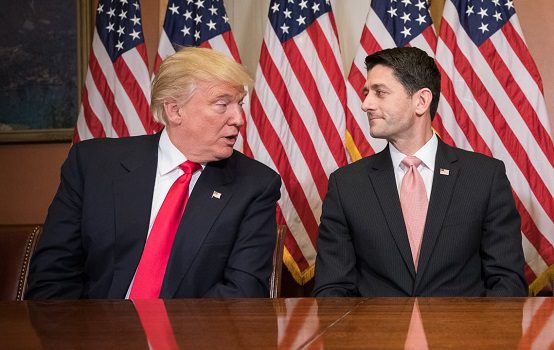The Real Realignment

The United States lacks a properly conservative political party—and that’s a good thing.
Political conservatism is a belief in preserving traditional institutions. In Europe, that often means a suspicion of modernity itself and a nostalgia for the monarchy, state church, or aristocracy. But in our context, “tradition” refers paradoxically to the U.S. Constitution, a genuinely revolutionary—and highly modern—document.
Speaker Paul Ryan realized this the hard way last October when he stated on C-SPAN, “I really call myself a classical liberal more than a conservative.” In response, numerous Trump supporters took to the internet to proclaim Ryan had inadvertently outed himself as a big government “liberal.” Yet Ryan was exactly right: conservatism and classical liberalism are very different beasts.
The classical liberalism of U.S. conservatives is not merely different than European conservatism—it is the stalwart rejection of the ancien régime in favor of its opposite: the Enlightenment concept of secular republicanism. Instead of a monarchy, there is representative government. Instead of an official religion, there is a wall separating church and state. And instead of an aristocracy, America strives to be a land of equal treatment and opportunity, even if, in execution, it has often failed.
That’s why, as the Republican Party has become more conservative in the American sense, it has also in many ways become more radical in its reform agenda, counteracting Donald Trump’s definition of a conservative as a “person who wants to conserve.” President Trump was roundly mocked in the press for providing the sort of tautological answer a student would resort to after neglecting to study for an exam. But in many ways, Trump’s superficial “conserve-atism” hues more closely to the Tory conception of national and cultural conservation. This was affirmed in his inauguration speech with its call for a return to “America First”—which, as Bill Kristol points out, is in spirit a European idea.
Under the auspices of what Steve Bannon calls “economic nationalism,” Trump’s America First vision is a mix of international go-at-it-alone-ism combined with what 19th-century economist Friedrich List called the “National System”: a rejection of the cosmopolitan, free-market economics of Adam Smith in favor of trade protectionism, ad hoc intervention in domestic industry, and major spending on infrastructure.
The United States in some sense invented this model under Alexander Hamilton, but ultimately rejected it in the 20th century as a weak species of mercantilism. Trump’s economic nationalism thus gives him much more in common with the party of Marine Le Pen, leader of the far-right French political party le Front national (who was recently spotted visiting Trump Tower), than with the party of Barry Goldwater or Ronald Reagan. It’s one import we could really do without.
Like the anti-immigrant and euroskeptic parties of Europe, Trump’s rise occurred on the crest of a populist wave, formed by an undercurrent of cultural change and the threat it seemed to pose to traditional ethnic and class hierarchies. Critics noticed this during the election, and rightfully called out the racism and xenophobia embedded in the burgeoning movement. But in doing so, they missed what was arguably the more revealing faction of monarchists and anti-modernists within the alt-right’s ranks. It was these so-called “neo-reactionaries,” new to the American political scene in a way that racists aren’t, who most acutely foresaw and relished in Trump’s medieval potential.
Liberalism, whether classical or modern, is an ideology for securing cooperation among people with radically different views and ways of life. Classical-liberal ideas like the rule of law, religious liberty, and free markets help accomplish that. Modern liberals just add civil rights and a fair distribution of income as necessary parts of the calculus. Thus, despite their many salient differences, Republicans and Democrats have both governed from a silent liberal consensus since at least the end of World War II.
Trump’s foreign style of conservatism would change that. His vision of a multi-polar world order with beggar-thy-neighbor economics abroad and populist economics at home—a modern version of the king rewarding his vassals—will complete the United State’s neo-feudal transformation.
That’s the real political realignment underway: from an America of two liberal parties to an America of just one. The question is whether the GOP will allow itself to be remade in Trump’s image, or fight to preserve its liberal core.
Samuel Hammond is the poverty and welfare analyst at the Niskanen Center.
Comments